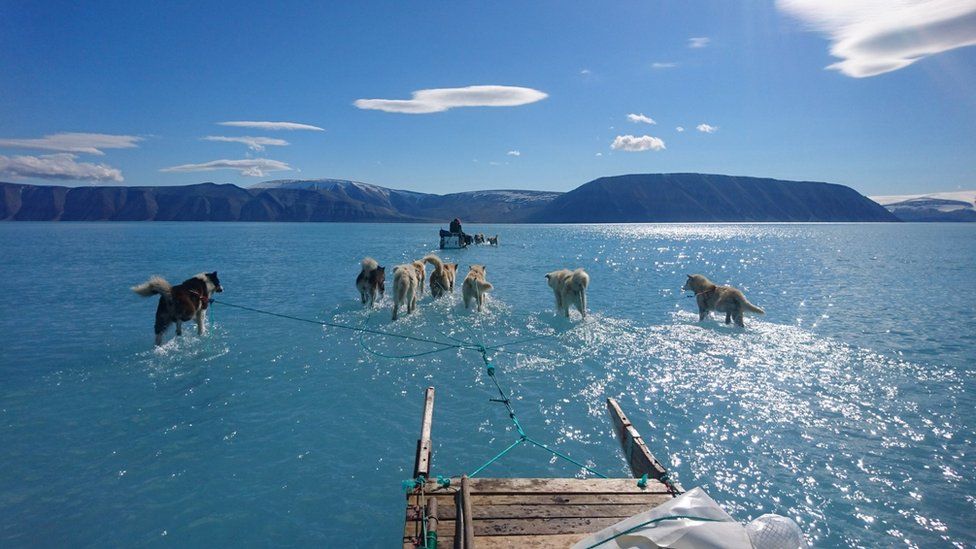Going, Going … Gone: Greenland’s Melting Ice Sheet Passed a Point of No Return in the Early 2000s

Starting in 2000, Greenland’s glaciers suddenly began moving faster, their snouts rapidly retreating and thinning where they flow into the sea. Between 2000 and 2005, that acceleration led to an all-but irreversible “step-increase” of ice loss, scientists concluded in the new research, published this week in the journal Nature Communications Earth & Environment.
If the climate were to stop warming today, or even cool a little, Greenland’s ice will continue to melt, said Ohio State University Earth scientist Ian Howat, co-author of the research paper. “Glacier retreat has knocked the dynamics of the whole ice sheet into a constant state of loss,” he said.
Whether or not this event is inevitable, the imperative remains to slow it down as much as possible. This means the rapid migration to low-carbon energy sources, and a wholesale change in the way that humankind manages its land.
